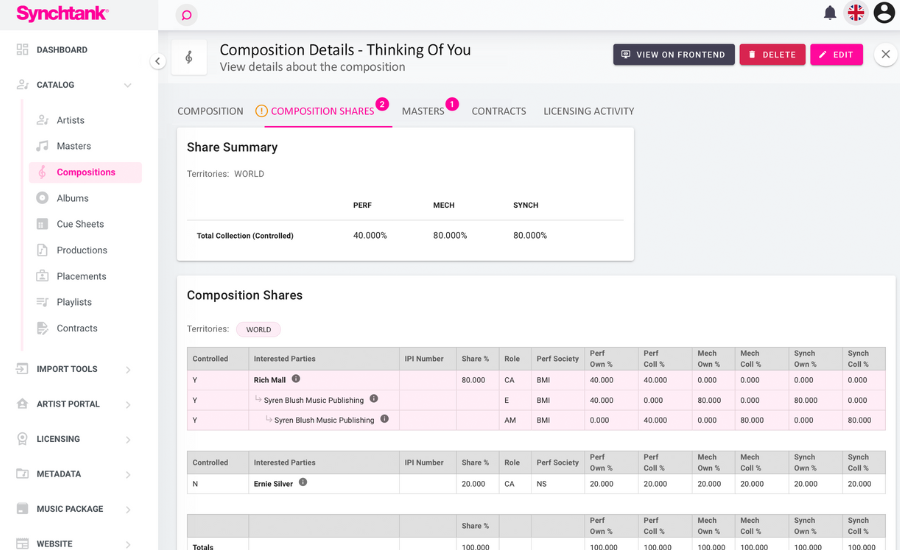When it comes to managing high volumes of data, there’s nothing more frustrating than a system that can’t keep up. Thousands of tracks, compositions, artists, albums, and no way to keep track of it all?
In today’s industry, the market is oversaturated with hundreds and thousands of songs, and that number is only going to continue to grow.
So what’s the best way to make your catalog stand out? Make sure that it’s in the best shape possible. It doesn’t matter how great and big your catalog is if people can’t find it.
This is especially important to realize if you were to put yourself in the shoes of music supervisors; searching through an endless sea of badly organized and mislabeled catalogs, all in a tireless quest to find that perfect song.
And that’s where our favourite words comes in, metadata, is your new best friend.
What is metadata and how do I use it?
Metadata is a fancy way of saying data about data. Translated into music catalog terms, this means the descriptions you use to label your tracks.
Being able to categorize, (and then subcategorize) by, not only genre or keywords, but mood, instrumentation, key, tempo, and even lyrics, allows you to make your catalog easily discoverable to the industry, and stand out so that when a music supervisor types in “songs that sound like love”, yours is at the top of the list.
But working from spreadsheets can make that challenging and somewhat restrictive.
Your central hub for music assets
With our innovative software platform, Synchtank allows you to not only organise your existing catalog, but enhance and structure it so that it’s easy to sort through for you, and for your potential revenue opportunities.
By having your sound recordings, compositions, artists, albums, placements, cue sheets, playlists, even contracts, and more in one place you can supersize your business in an instant. Which is why Synchtank exists, our system allows you to add, manage, and edit, streamline all your assets, all while avoiding pesky obstacles such as duplicates or synonyms.
Not forgetting our data management tools such as duplication detection which gives you the ability to merge compositions seamlessly helping to declutter your catalog. And being able to bulk upload and edit your catalog means that you can make changes quickly and hassle free.
So, you get your catalog into one place but what more can you do?
Seamless integration and reporting
However you decide to breakdown your catalog, those changes can also be applied to your front end page, so that you’re always putting your best foot (page?) forward. By stepping up your game, you utilize metadata to the full extent, and therefore make your catalog more accessible, easier to search and more open to potential sync opportunities.
To tie it all up, the software also allows you to to report on your catalog, as if by magic, with the click of a button. Whether you’re looking to download data by masters, tracks or cue sheets, you’re able to download the csv. file so you can open it directly within excel, and filter down to a refined list, such as created by, type, keywords etc.
To put it simply: Synchtank acts as a central hub to unify all your music assets.
The future-proofing power of organized data
Our software offers you a simple, clean and easy way to get your catalog organised, but it’s more than just a pretty face. By getting your catalog in order, you reduce the risk of licensing errors or royalty disputes further down the line due to inaccurate or unclear data.
Because lets be honest, having an organized catalog leads to better searchability, accurate reporting, efficient licensing, and reduced unnecessary admin.
And once you have it all in order, imagine how you’re able to scale your catalog and business needs… the possibilities are endless!
All of this is possible with the standard Synchtank Core Platform, so if catalog management is giving you a headache then let’s talk about it.
